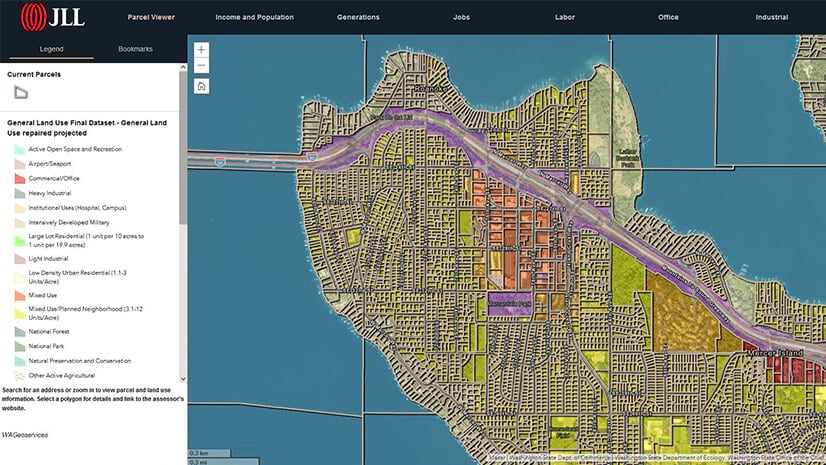A nurse urgently needs to locate a defibrillator to restore a patient’s heartbeat. A warehouse manager must quickly move a pallet to the correct loading dock. A facility manager is tasked with optimizing a workspace for social distancing.
Circumstances like these point to why demand is peaking for real-time, location-aware asset management systems, and why smart workplaces are fast becoming a priority for businesses across industries.
As companies begin to emerge from COVID-19-imposed shutdowns and employees return to the workplace, managers will be more attuned to indoor space—and to monitoring its dynamics.
An indoor asset management system remembers the patterns and movements of people and objects through space, and can identify patterns of activity. By studying these rhythms, decision-makers gain important insight into how spaces and resources are used, how practices like social distancing are working, and what safety and efficiency improvements managers might make.
Visualizing the Workplace in 3D
Real-time asset management gives administrators and executives indoor location awareness by creating a digital twin of the workplace on an interactive smart map. Using this NextTech capability, powered by a geographic information system (GIS), operations leaders can monitor any asset in real-time—whether it’s a hospital bed, a fire extinguisher, or an IT technician—and get it where it needs to be. The result is a safer, smarter, more efficient operation.
The kind of location intelligence we rely on to navigate our driving and outdoor walking routes has taken time to move indoors. Decades of government funding for satellites sparked the mapping of large landmasses, but until recently, technology could not offer the same level of real-time accuracy and wayfinding inside an office building.
But now, thanks to Internet of Things (IoT) sensors, 3D modeling, and GIS technology—all components of a digital twin—corporate facility managers and administrators can clearly see information about indoor assets. The digital twin supports better decisions and helps facilitate new practices like workplace social distancing.
For businesses, the breakthroughs in real-time asset management translate into greater efficiency and productivity. For example, a health system in northern Illinois calculated that time wasted by staff searching for assets in a 395-bed facility cost $4,000 a day. A smart map of the building would supply the needed information instantly.
This capability also improves the customer experience. A wayfinding app at a large corporate campus could allow a new visitor to navigate labyrinthine hallways as expertly as a veteran employee—and avoid straying into areas with strict capacity rules or other restrictions. This not only makes an easier time for the visitor, it also means staff members are no longer interrupted for directions or exposed to unnecessary risk.

According to one tech company’s estimate, the time employees spent trying to find their way around campus translated into $400,000 a year in lost productivity—just one cost of poor indoor location intelligence.
The Potential for Smart Hospitals
The NextTech demonstration below shows how assets on a hospital campus could be visualized in real time. Through GIS-based digital twin technology, the viewer sees multiple buildings of a large healthcare center, including floors, entrances, stairwells, and other details. Security guards appear in red as they make their rounds or hold a position. Equipment like an IV pump, wheelchair, or mobile X-ray machine is color coded for fast visual identification and can be seen as it moves through the facility. A security or operations director can zoom in to an area of interest or click a button to reveal a specific floor or isolate assets.
For a hospital facility administrator, this real-time holistic view is invaluable in allocating assets and making quick decisions. For instance, when a visitor with reduced mobility and a patient leaving surgery both require wheelchairs, the digital twin reveals the closest available chairs. When a nurse ends his or her shift, any equipment under their responsibility can be tracked by the incoming shift, without an IV pump or mobile X-ray getting lost or misplaced. And in the event of a fire, flood, or other natural disaster, multiple users could rely on the hospital smart map to gauge which patients or staff members are at risk, and the nearby resources they may need to stay safe. In settings like these, a real-time asset management system can help save lives in addition to time and money.
Indoor Positioning’s Broad Applications
The same technology could be employed by a college campus, shopping mall, warehouse, or supermarket. The assets could be employee security badges, high-value lab equipment, or packaged goods. Whatever the resources or infrastructure, a smart workplace helps assets and individuals get where they’re most needed.
In optimizing real-time operations and strategizing for the next five years, a digital twin of the workplace supplies business leaders with the indoor location intelligence needed to promote safety and efficiency.











